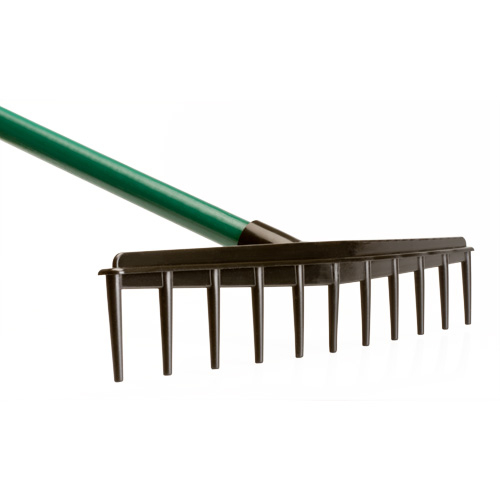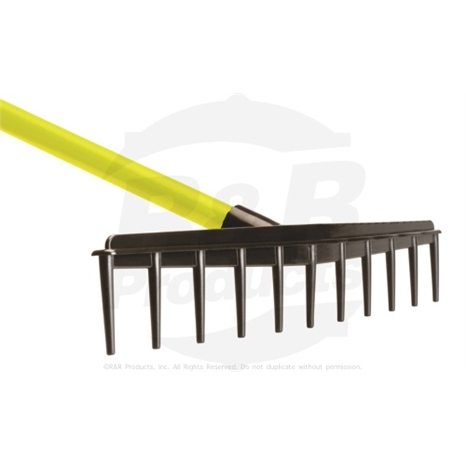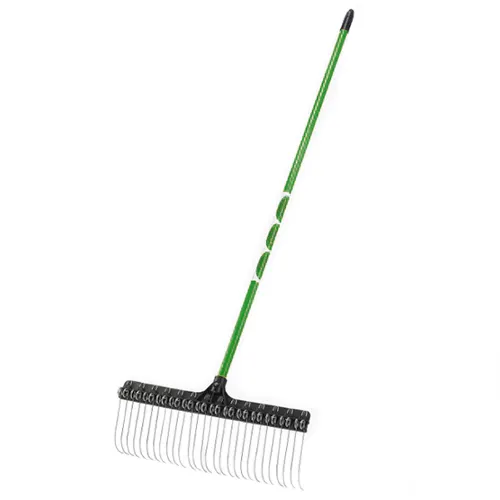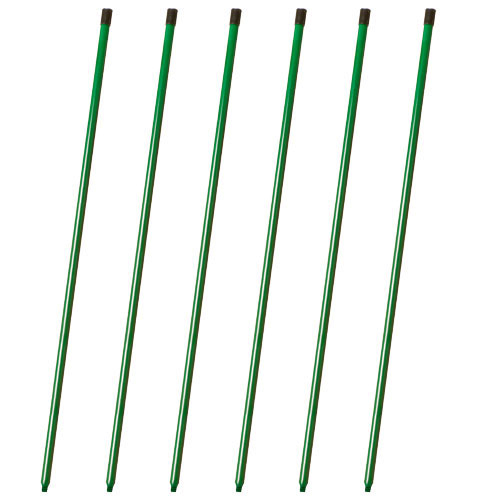Rakes
You can find parts for your mechanical bunker rakes here:
Parts that fit your Toro bunker rake
RP510-2572
€396.87 incl. VAT
RP510-1854
€325.97 incl. VAT
Rakes
Bunker rakes divide golfers for a long time now, because, should those rakes be placed in or outside the bunker? And how should they be put precisely. It is not easy, because the choice in bunker rakes seems endless. At RDM Parts we gladly lend a hand in this matter.
Bunker rakes
To remove any traces from a golf bunker, a bunker rake is used. The golf player should remove its traces for the next golf player so he or she can see where the ball has landed if it landed in the bunker.
Bunkerrakes are multifunctional by design. First of all, the teeth are diamond shaped so the rake can be pushed and pulled. The top end of the rake can be used to level the sand. The material of the rake end can differ, it can be plastic or aluminium or another kind of steel.
Sieve rakes
A sieve rake is used to clean bunkers. The rake can be used normally like you would with other rakes. The sieve helps with cleaning leafs, stones and other garbage by collecting it. This makes the rake vital for the maintenance of bunkers. The size of the sieve holes is decisive for the dirt it can sieve.
Sand rakes
After an intense downpour the sand of the bunker is compressed. This can lead to the bunker not directly stopping the golf ball. With a sand rake this compacted top layer is easily broken so the impact of the golf ball is seen again. Also, a nicely raked bunker looks good. A sand rake is usually made from steel.
Leaf rakes
The teeth of a leaf rake are designed to capture the leaves optimally on each surface. The teeth are usually made of this strips of steel or plastic. This makes the rake follow the terrain optimally.
Equalisation rakes
Like the name says, the equalisation rake ensures that the sand is levelled. The rake has a broad steel blade, mostly a metre wide. With this width you can push hard enough to move the sand and level it. Some of these rakes also have teeth to rake the sand neatly. The teeth can also be used to remove large trash from the bunker.
Different sticks for the rake
There is even something to do with the stick. Mostly it is available in several colours and sizes. The weight of the stick depends on the material that is used in combination with the rake head. The stick can be made from wood or fibreglass.
Placement of the bunker rake on the golf course
Now that we know of the different rakes it is time to place them on the golf course. Where should it be placed exactly after it has been used? The disagreement probably exists because there are no exact rules about the placement of the rakes. However, there are some rules that apply. These state that the rake should not be an obstruction. It can potentially redirect the golf ball in or out of the bunker. Also it should not be placed in a way that it can prevent a rolling ball from entering the bunker. In the end placement is decided by the tournament commission. Several golf associations state that it is best to place the rake next to the bunker in a way that its profile is as little obstruction as possible. So place it on the side of the bunker and point it towards the direction of play to minimise its obstructive potential. Show that a rake does not belong inside of the bunker with this convenient sticker.

























